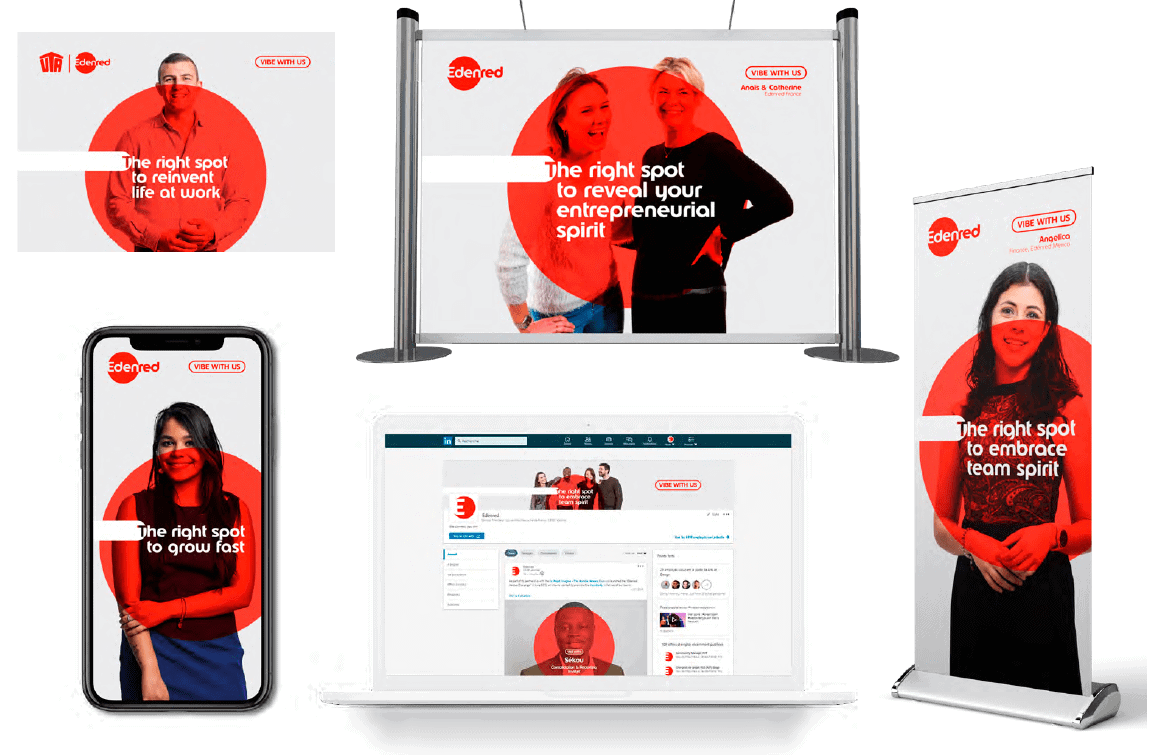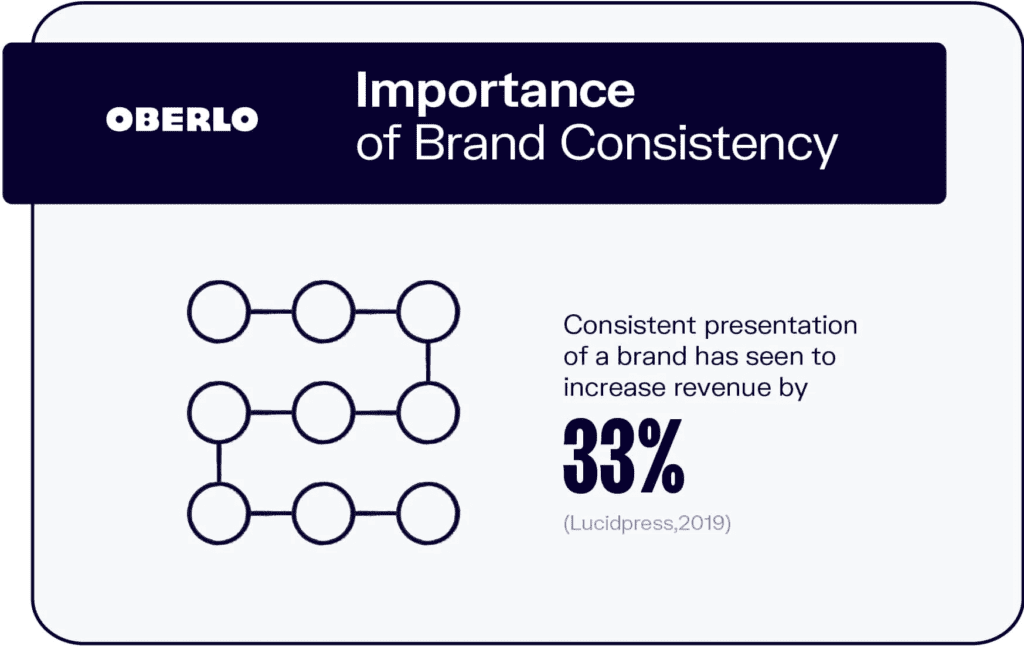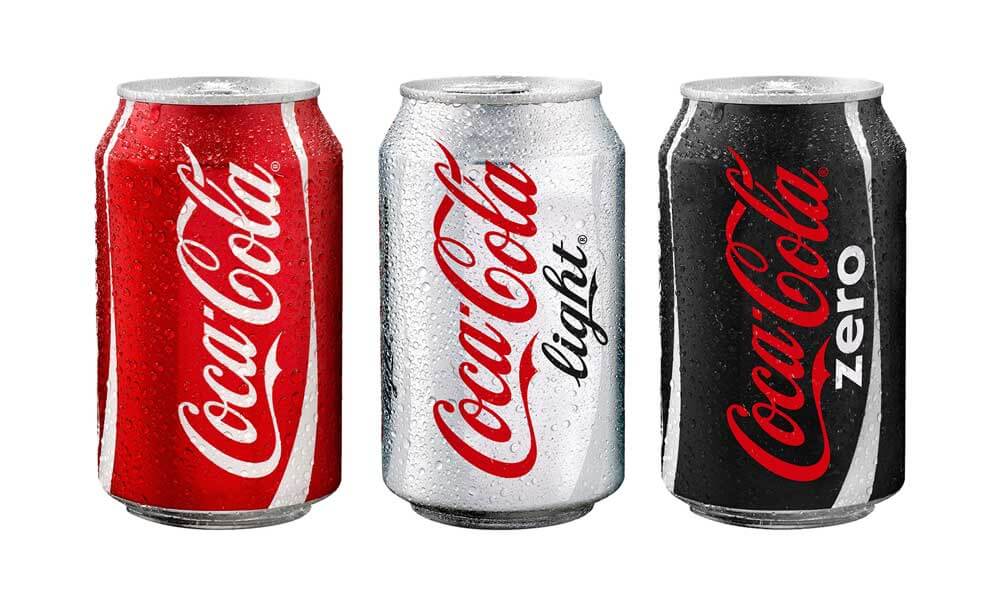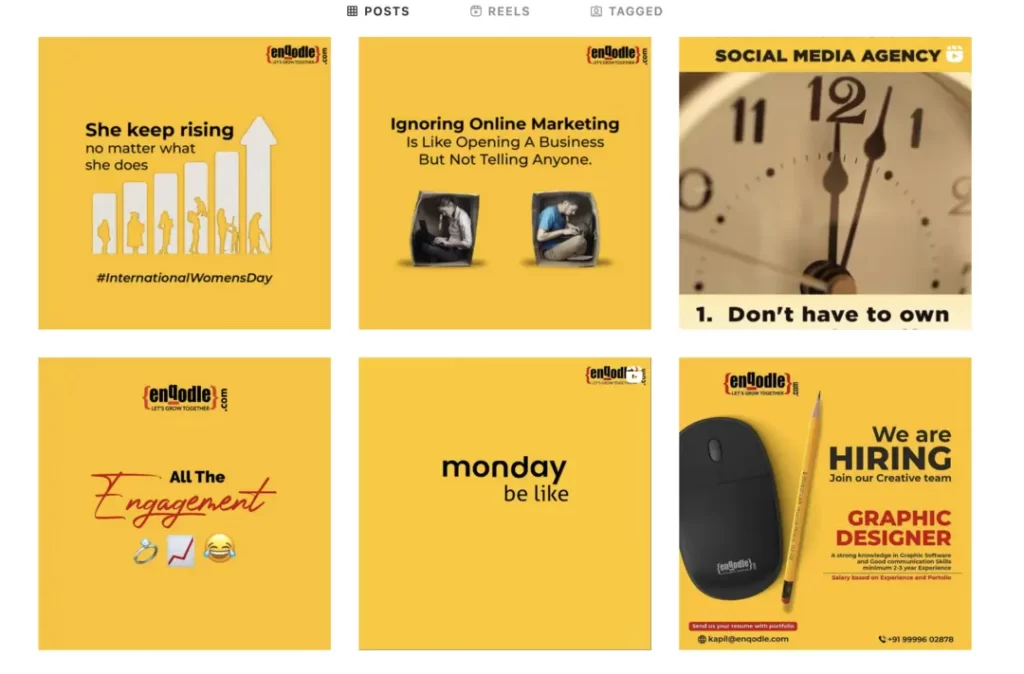Brand Consistency: The Cornerstone of Memorable Brands
Well, let’s begin with a thought experiment. Imagine the iconic golden arches. I am sure you saw the famous McDonald’s logo just then, didn’t you? This is why brand consistency is so vital.
A solid and consistent brand is a compass for your customers through various options. In our highly connected world dominated by social media, where thousands of marketing messages are thrown at us daily, having one voice and visual identity that makes sense is essential.
In essence, it means that whatever interaction between brands—from the packages they use to their posts on social media platforms—ought to be congruent with their core values and personalities to leave an indelible mark in people’s minds. It’s just like having that one friend whose laughter or catchphrase we can never forget about. They tell you who they are whenever you hear it.
By following this logic, consistency in branding also creates confidence and loyalty – who wants to deal with mixed messages from companies anyway?
Table of Contents
The Building Blocks of Memorable Branding

So, what exactly goes into crafting a unified, unmistakable brand presence? Let’s break it down.
A Cohesive Visual Identity
We are visual beings, and images profoundly impact our psyches. This is why having a consistent look and feel across all your branded assets is essential.
From your logo and colour palette to your website design, packaging, and even office furnishings – every visual touch point should reflect the character of your brand. Are you an elegant contemporary brand exuding minimalistic sophistication? Or is your flavour more diverse and playful?
The secret lies in excavating the crux of your brand and using this as a beacon for every aesthetic choice you make. Write crystal clear, detailed brand guidelines so everyone, from designers to social media interns, is on board.
A Distinct Brand Voice
Your brand is much more than just pretty graphics. It’s the language and personality you project. Iconic voices such as those of Apple, Innocent or Oatly set them apart from others in their class.
However, getting an authentic, distinct brand voice down pat isn’t as easy as pie. It would help if you struck the right balance between personalisation and professionalism. If it’s too wild or casual, then it will turn off potential customers who know better what they want, while if it seems too rigid or full of jargon, people would be bored by such a tone.
Where does it lie? Just imagine you are talking to one of your closest friends; be frank at appropriate times but show some sympathy for their needs and interests. Also, ensure that whatever you write about on the web, even automated email receipts should maintain the same tone throughout.
Brand Storytelling
Speaking about personality, storytelling is one of the best ways brands can humanise themselves. We naturally like narratives that appeal to our emotions regarding company origins (e.g., the cult-like fan base built by Patagonia around its purpose-driven branding).
Each message you send is an opportunity to incorporate the story behind the “why.” Did the founders develop their product because it solved their problem? What weird hiccups did they face? The more you tap into everyday experiences, the better your emotional resonance with your audience.
Now, let’s look at some examples of brand consistency among some of the top brands:

Customer Experience (CX) Alignment
Marketing alone cannot build brands. 2019, for example, Gartner found that 89% of companies compete on CX over other things, such as products or prices.
In other words, ensure every customer interaction (digital and IRL) reinforces your core brand promises. This means aligning everything from your website UX to your customer service philosophy—no easy feat!
Regular touchpoint mapping and CX audits are essential for identifying and rectifying brand inconsistencies. Break it down into each step a customer takes when they buy something online. Does that ecommerce purchase flow sync with your “friendly efficiency” mantra? Are your frontline staffers embodying your “locally sourced artisanal sophistication” vibe?
Why Brand Consistency Pays Dividends
Sure, that level of meticulous brand oversight requires elbow grease. But the payoffs make it all worthwhile.
Improved Brand Recognition and Recall
In our crowded digital ecosystem, familiarity breeds trust and affinity. By serving up a unified sensory brand experience every time, you're carving your unique identity into your audience's collective consciousness.
The numbers back it up. Studies show that consistent brand presentation can increase revenue by a whopping 33%. Why? Top-of-mind brands simply loom larger during the all-important point of sale or conversion.
Greater Customer Loyalty
Ever notice how militantly devoted Apple fans are? They'll wait in line for hours, then proudly show off that iconic white box like a badge of honour. Apple has bred fanatical loyalty by keeping its brand solid across every product, ad, store, and service interaction.
When customers know precisely what to expect from your brand time after time, it dissolves uncertainty and builds an invaluable sense of trust. That's probably why brands with stellar consistency enjoy a 20% boost in customer satisfaction.
Bigger bottom-line impacts
At the end of the marketing day, brand consistency equates to more revenue and growth for your business. And the stats are staggering:
- Brands that maintain a consistent presence see a 23% increase in revenue over one year.
- Ad campaigns boasting consistent branding see a 3.5x higher stock performance over their inconsistent counterparts.
- 79% of brand-loyal customers would be willing to try a new product from a brand they know and trust.
Getting Your Brand Consistency Strategy In Shape

Okay, you're excited about consistency now. Here are some essential tips for aligning your brand across all touchpoints and interactions.
Nail Down Your Brand Identity System
Before you can craft a cohesive brand, you need to get crystal clear on your:
- Core brand purpose
- Target audience and personas
- Unique value proposition
- Brand personality attributes
- Messaging pillars and proof points
One of the best ways to distil these elements is by creating customer journey maps and buyer personas. Through empathy mapping and ethnographic research, you can get inside your customers' heads to understand their distinct needs, pain points, habits, and values.
This insight will then directly inform every other branding decision, from your tagline to your visual identity and tone of voice.
Create Robust Brand Guidelines
With an airtight brand identity framework, the next step is codifying those core hallmarks into comprehensive brand guidelines. Think of it as a sacred brand bible or rulebook to ensure alignment across your organisation and extended teams.
Your guidelines should cover:
- Mission and brand story
- Visual identity system (e.g., logo usage, colour palette, typography, etc.)
- Brand voice and tone guidelines, including examples
- Photography and iconography style guidance
- Editorial guidelines for web copy and content
Be as specific as possible. Give clear examples of what on-brand versus off-brand is. And make it an interactive, user-friendly document—not just a stale PDF.
Live Your Brand
Baking brand consistency into your company culture and processes may be the biggest challenge. After all, every employee interaction is a brand interaction, whether greeting visitors, handling customer service calls, or posting that next TikTok video.
Socialise your guidelines and voice attributes during employee onboarding and regular training programs. Incentivise living and celebrating the brand. Build brand stewards into every department who can audit for consistency and share feedback.
When your people embody your brand personality, the brand experience stays authentic and cohesive—across every customer touchpoint.
Implement Brand Management Systems
Regarding touchpoints, juggling brand consistency across all your traditional and digital channels is a beast. Brand management software (digital asset management tools) can provide a centralised source of truth for approved on-brand assets, messaging, creativity, and more.
With cloud-based brand portals, you can ensure regional teams, agencies, and other partners stick to the latest brand standards. Built-in approval workflows also streamline the creation and dissemination of new on-brand content.
Conduct Regular Brand Audits
Even with meticulous planning and stellar systems, brand drift is all too common as organisations scale and evolve. An overeager social media manager must stay within your brand voice guidelines. Or an outdated product shot makes its way onto your website, clashing with your current look.
Scheduling comprehensive brand compliance audits every 6-12 months is crucial. Systematically evaluate all your core brand touchpoints and channels for consistency gaps:
- Website and digital platforms
- Sales and marketing collateral
- Packaging and merchandise
- Internal and external messaging
- Storefront/office branding
- Social media profiles and content
- Email/SMS communications
- Advertising and sponsorships
- Employee brand ambassador activities
Document every instance where brand standards or guidelines aren't followed. Then, work cross-functionally to realign and refresh those inconsistent elements.
The Risks of Brand Inconsistency

We've covered all the mouthwatering benefits of a unified, unforgettable brand presence. But what exactly happens when branding goes off the rails? Strap in because it isn't pretty.
Confused Customers and Weakened Brand Equity
The old saying goes, “A person with two watches never knows the right time.” Your customers will be utterly bewildered if your brand sends mixed signals through misaligned messaging, visuals, and experiences.
That disconnect waters down your brand's perceived value and relevance. You'll need help articulating a compelling identity that distinguishes you from competitors. And why would customers choose you over more distinct, cohesive brands?
Dulled Marketing Performance
With an ownable, consistently reinforced brand identity, your marketing campaigns will stay strong. Prospects won't forge the crucial emotional connection to drive meaningful engagement and conversions.
Haphazard branding undermines recall, too. So, is all that spent on awareness ads, social promotions, and sponsorships? It'll hardly register with your audience if each piece lacks cohesive branding.
Tarnished Reputation and Credibility
Truly egregious cases of brand misalignment can torpedo your company's reputation and credibility. Imagine a luxury goods manufacturer using cheap-looking, typo-ridden packaging alongside high-end products. Not a great look, right?
Little inconsistencies like that breed doubts about a brand's quality and legitimacy. Before you know it, the rumour mill is churning with speculation about mismanagement or cost-cutting corners.
Internal Inefficiencies and Disengagement
And it's not just external fallout. Rampant brand inconsistency wreaks havoc within organisations, too. Hazy, fragmented brand guidelines force teams to make it up as they go, resulting in costly rework and reapprovals.
Worse, ambiguity around a company's purpose and personality sows employee disengagement. How can your people rally around something so ill-defined? A robust and well-articulated brand boosts workplace satisfaction and ambassadorship. Muddled messaging has the opposite effect.
Future-Proofing Your Brand Consistency Strategy

In today's ever-evolving digital landscape, safeguarding brand consistency is an ongoing endeavour—not a one-and-done initiative. As channels, campaigns, products and teams multiply, so do the potential consistency pitfalls.
That's why forward-thinking organisations are doubling down on strategies like:
Brand Governance Frameworks
More than static guidelines, comprehensive brand governance models ensure bankable, scalable brand alignment across your entire ecosystem. At their core is a transparent system for:
- Roles and ownership for brand compliance
- Entrenched brand value measurement
- Guidelines for evolving brand assets with audience needs
- Defined workflows for approving new branded deliverables
- Ongoing training and culture-building programs
- Centralised brand tech stacks
A rigorous governance model makes brand consistency an upfront strategic consideration—not an afterthought.
Ongoing Brand Health Tracking
You can't fix what you don't measure. Essential brand diagnostic tools like perception studies, audits, focus groups, customer surveys, and social listening allow you to:
- Assess how well your brand identity resonates across audiences
- Pinpoint sources of potential brand dilution or inconsistency
- Understand emerging audience preferences and behaviours
- Refine your brand strategy to stay hyper-relevant
Build processes for routinely gathering and acting on these rich brand health insights. Brands are living, breathing entities that must evolve to stay distinctive and compelling.
Sustained Brand Training and Enablement
Even the most brilliant brand guidelines gather dust if your teams need to be more skilled in bringing them to life, so brand education should be an ongoing initiative—not a one-off workshop or PDF share.
From role-based training programs to internal guilds and certifications, empower your people with the knowledge and tools for upholding world-class brand alignment—Socialise examples of strong and poor brand application. Emphasise the “whys” behind your brand strategy, so employees grasp the business impacts.
Next-Gen Brand Management Tech
Technology has a vital role, too. Brand asset management platforms have come a long way, offering artificial intelligence for:
- Automated asset tagging and text detection
- Compliance monitoring
- Creative workflow approvals
- Content variations and dynamic templating
- Digital rights management and permissions
- Metadata standardisation and quality control
The latest brand management tech helps organisations achieve unparalleled consistency, governance and content velocity with fewer headaches.
Wrapping Up
In today's hyper-connected world, brands aren't just logos or products—they're powerful identity signals that shape customer choice and loyalty like never before. You'll cement an invaluable competitive edge by crafting a unified, resonant brand experience that's singularly yours.
Getting there requires diligence and commitment across your organisation. But when thoughtful brand consistency becomes ingrained in your culture and DNA, you'll reap the rewards of increased impact, revenue growth and genuine audience affinity. Let the iconic brand-building begin!
Frequently Asked Questions
Which brands have maintained an unswerving image over a long period?
Brands such as Apple, Coca-Cola, Nike and IKEA are known for their unified brand voice, visual identity, and consistent excellent customer experience in all channels.
How does social media influence brand consistency?
Nowadays, social media is one of the most influential touchpoints that a brand can have. For instance, using various visuals or tone of voice on Instagram, X, or even TikTok can quickly destroy your brand equity within a few days.
What role does employee buy-in play in brand consistency?
In other words, employees are the face of your company. Therefore, if they do not know or buy into the set brand attributes and tone of the company, it will show up in inconsistent customer interactions, which lack authenticity.
How do you create brand guidelines?
Ultimately, putting down what you need to capture about your products/services entails creating certain proprieties to get started; they include content on why you exist as a business, who you target with these offerings, and how you differentiate yourself from rivals, among other elements. With this foundation in place, you can prescribe things like logo systems, colour palettes, photography styles, and editorial standards.
Often, should I audit my brands?
On average, marketers recommend that comprehensive audits covering all assets and channels be done twice a year. Additionally, there should be more frequent spot checks and continuous monitoring through social listening tools to counter minor inconsistencies that may arise during campaign execution.
What is the impact of consistent branding on marketing performance?
More considerable awareness recall engagement for better-aligned ad messages & visuals- Data indicates that campaigns with consistent branding deliver 3.5 times more brand impact than those without concerted efforts.
Does this matter for B2B companies?
Without doubt! The paragraphs above might have given an impression that while earlier adopters were mainly B2C brands today, B2B buyers similarly expect a consistent brand. They are 89% likely to choose a vendor because of the experience they provide; it is just as important, if not more so, than their products/services.
What technology supports brand consistency?
Brand management platforms, digital asset management software (DAMS), content creation suites like Adobe Creative Cloud, marketing workflow toolsets like Bynder, and AI governance systems like Albert all go toward centralising approved materials and governing how marketers create new ones on-brand.
How do you balance brand consistency with the need to evolve?
For instance, strong brand governance models have feedback loops and checkpoints that allow the company to vary slightly from previously set guidelines as tastes and trends of the target audience change or shift without a total rebranding exercise.
Why is achieving brand consistency difficult for large global companies?
In addition to this, large-scale organisations have different brands across their departments, regional markets, and outsourced PR agencies, among other specialised groups; hence, multiple sources of dilution forces exist on their brands. Robust processes must enable it.
